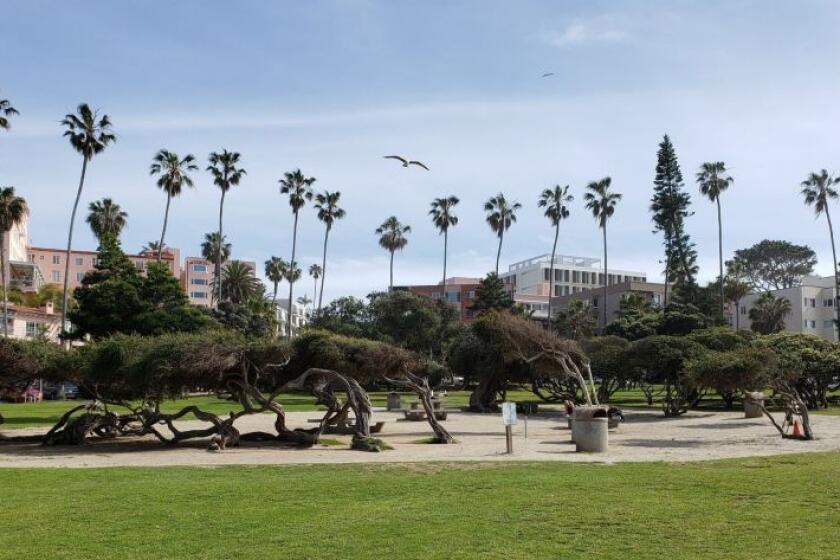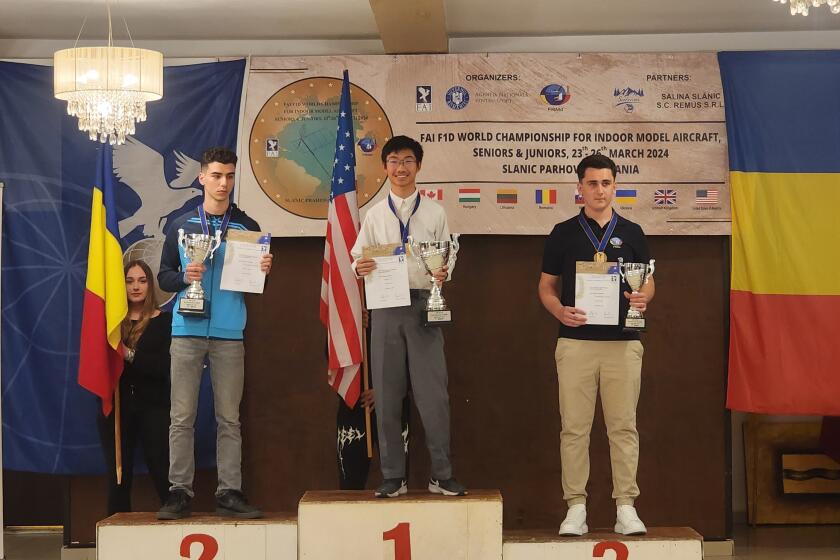Millimeter-long marine worm named for La Jolla benefactress Ellen Browning Scripps
La Jolla benefactress Ellen Browning Scripps has her name on a lot of things around town — a hospital, a grant-giving foundation, an honorary luncheon that doubles as a fundraiser for the La Jolla Historical Society, a park and more. Now there’s another thing that bears her name: a worm found off the coast of La Jolla.
Seemingly less glamorous than her other namesakes, the identification of this species signifies healthy sand, which in turn suggests a healthy marine oceanic ecosystem or beach.
Researchers, including Scripps Institution of Oceanography (SIO) marine biologist Greg Rouse, were part of the team tasked with naming the millimeter-long marine worm. The team, led by Alexandra Kerbl and Katrine Worsaae from the University of Copenhagen in Denmark, described the species Trilobodrilus ellenscrippsae in the April 3 European Journal of Taxonomy. The researchers also named another worm Trilobodrilus windansea, for the coastal neighborhood where the worm is found among beach sand grains.
“There is a huge diversity of small creatures that live among the sand grains that we know little about,” Rouse said. “This group (Trilobodrilus) is found in sands all over the world, but only a few have been named — these are the 15th and 16th. They are a signal of a lot more diversity than we know about ... so much of the sea is undiscovered.
“(These worms are) tiny, but that doesn’t mean they’re not important. There could be millions of them ... their ecology has been hard to study, but we think if they graze on bacteria, they are contributors to a healthy area. There is a whole other world in that sand environment. A lot of people do microbiology and big animals, but this world of tiny animals is often ignored. These worms can get easily overwhelmed if the sandy area gets overly polluted. When we find them it is a sign of a healthy beach, it’s a good thing.”
He added:, “On beautiful beaches like WindanSea, if it had a lot of pollution you wouldn’t find them.” The WindanSea worm, Rouse said, was named such because “we found it right there at the base of the beach here the waves crash and we think it’s a great name.”
The ellenscrippsae worm was found off the coast near The Cove, outside the marine reserve. “We were diving and found it in sand patches,” he said.
Rouse explained that he wanted to name the species after Scripps after reading the biography “Ellen Browning Scripps: New Money and American Philanthropy” by Molly McCain. “We’ve named things for Ellen, such as the pier, and though she was the core founder of SIO and I wanted to honor her with the name, I hadn’t realized how much she really did and that she was so engaged in the community on all sorts of levels. She was interested in things that were far ahead of her time ... we should recognize her more,” he said.
Rouse, the curator of SIO’s Benthic Invertebrate Collection and 12-year researcher at Scripps, said he conducts biodiversity studies but has yet to find something of the minuscule nature. “I’m used to finding and naming bigger creatures, and am thrilled to find two new creatures in the sandy marine environment.”
Ellen Browning Scripps (1836-1932) spearheaded the creation of the Marine Biological Association of San Diego, which evolved into Scripps Institution of Oceanography. With her backing, the association purchased the 170-acre plot of land that became the Scripps campus in 1907. The marine lab was renamed the Scripps Institution for Biological Research and became part of the University of California in 1912. The UC Regents changed the name to Scripps Institution of Oceanography in 1925 in recognition of the breadth of research underway at the institution.
Get the La Jolla Light weekly in your inbox
News, features and sports about La Jolla, every Thursday for free
You may occasionally receive promotional content from the La Jolla Light.




